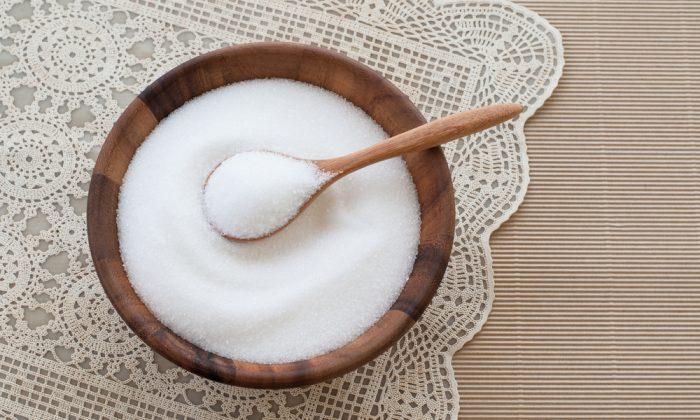Nothing exemplifies the promise of having your cake and eating it too quite like sugar substitutes.
All the problems associated with sugar (addictive, empty calories that can lead to diabetes, obesity, candida, and tooth decay) have inspired numerous products designed to have all of the sweetness with none of the consequences. But it seems as soon as we’ve discovered something that hits that elusive sweet spot, it invariably invites a whole new set of problems.
In the cost/benefit analysis of sweetener choices, xylitol fares better than most. Over the past few years, it has gained a good reputation with consumers and food manufacturers because it looks and tastes like sugar, with 40 percent fewer calories. It also has several health benefits not normally associated with sweeteners.
The xylitol name comes from the Greek word “xylon” meaning “wood.” This sweetener is often associated with birch trees since that’s where a German chemist discovered it in 1891. European countries began to embrace xylitol following World War II due to a sugar shortage.

The Good
Xylitol belongs to a class of sweeteners called sugar alcohols, along with mannitol, sorbitol, and other weird sounding words ending in “-itol.” Despite the name, they contain neither sugar nor alcohol, but have molecular characteristics of both.
Since the 1970s, sugar alcohols have been shown to prevent tooth decay, and xylitol has demonstrated the best effect in this regard. It increases saliva production, and has also been shown to decrease risk of bacterial infections.
Xylitol has a low glycemic index (12), compared to sugar (65), and high fructose corn syrup (68). Xylitol sweetened treats are often recommended to diabetics because they have minimal effect on blood glucose and insulin levels.
Xylitol does not have the bitter, licorice aftertaste associated with sweet leaf stevia, but it does have a noticeable mouth cooling sensation—sort of like menthol. Xylitol crystals can be stirred into coffee or used in baking in the same amounts as sugar, though it turns to liquid when heated and will not caramelize. Because of its oral health reputation, xylitol is often found in tooth paste, mouthwash, lozenges, and gum. There are even xylitol nasal sprays to treat sinus infections.
Like stevia, xylitol is also recommended for those suffering an overgrowth of candida yeast. Candida loves sugar, but it’s not so keen on xylitol. One study showed that xylitol prevented oral candida from taking hold. A few studies suggest that xylitol may have a beneficial effect on gut bacteria, acting as a prebiotic.
Other promising studies show that xylitol may help increase bone density, and may slow the effects of osteoporosis.

The Bad
Xylitol can have some unpleasant side effects, but this is mostly an issue of dosage. While xylitol is considered very safe among regulatory agencies around the world, sugar alcohols can trigger bloating, diarrhea, and gas. Children are especially sensitive to these effects. However, with regular consumption, such symptoms usually fade.
To avoid problems, start with small amounts and gradually increase over time. Cut back if symptoms develop. Adults are advised to consume no more than 3 tablespoons a day. Children should limit consumption even more so depending on weight and sensitivity.
One bone of contention with xylitol is source material. In the past, xylitol was called birch sugar, but these days birch trees are rarely the source. Many hardwoods and plants contain xylitol, our bodies even produce small amounts as part of the metabolic process. However, much of the xylitol available today is extracted from Chinese grown corn cobs.
Corn-based manufacturers stress that all xylitol has identical molecules regardless of source, and that corn extraction is cheaper and doesn’t kill trees. But many believe that birch is still a superior source.
Another concerning aspect of xylitol is that its manufacture requires hydrogenation—the same process used to turn vegetable oils into shelf-stable trans fats. While xylitol is technically a natural product, extraction involves serious industrial chemistry.
For most, xylitol is generally safe in moderate amounts, but for epileptics it may increase the frequency of seizures. It can also be deadly to dogs. Even a small amount can plunge canine blood sugar to dangerously low levels, and may lead to seizures and liver failure.







Friends Read Free